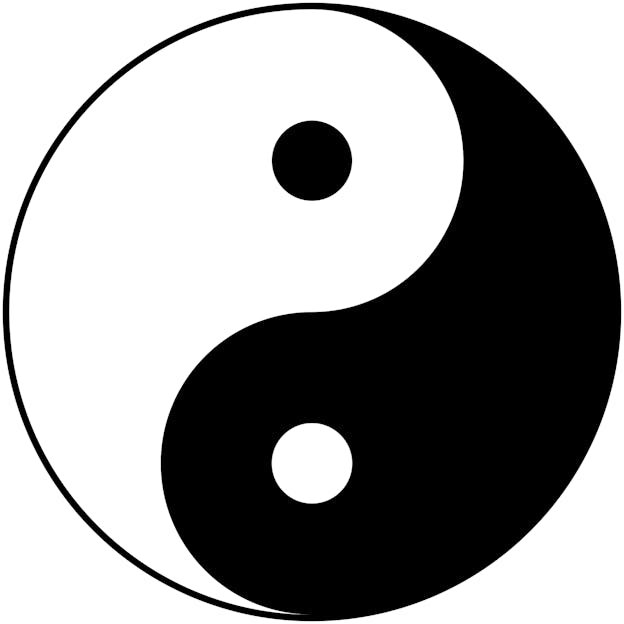
Yin and Yang

In Chinese and other Eastern thought, yin and yang are the two opposing and complementary forces that make up all phenomena of life. Both proceed from the Supreme Ultimate and together they represent the process of the universe and all that is in it.
According to the Encyclopedia Britannica, "The significance of yin-yang through the centuries has permeated every aspect of Chinese thought, influencing astrology, divination, medicine, art, and government."
Yin has the following characteristics, representations and symbols:
- earth
- female
- dark
- passive
- absorbing
- even numbers
- valleys and streams
- the tiger
- the color orange
- a broken line
Yang has the following opposite characteristics, representations and symbols:
- heaven
- male
- light
- active
- penetrating
- odd numbers
- mountains
- the dragon
- the color azure
- an unbroken line
The concept of the yin-yang is very ancient, and its precise origins are unknown. In the third century BCE, it formed the basis for an entire school of cosmology, the Yin Yang School.
Source
- "yin-yang." Encyclopædia Britannica. 2005. Encyclopædia Britannica Premium Service. 18 Jan. 2005 <http://www.britannica.com/eb/article?tocId=9077972>.
Article Info
| Article Title | Yin and Yang |
|---|---|
| Date Published |
March 17, 2015
|
| Last Updated |
September 4, 2024
|
| Full URL |
https::///yin-yang
|
| Short URL | https://rlft.co/1213 |
| MLA Citation | “Yin and Yang.” ReligionFacts. 17 Mar 2015, https::///yin-yang. Accessed 13 Jul 2025. |
| Embed Link | <a href="https::///yin-yang">Yin and Yang</a> — ReligionFacts |